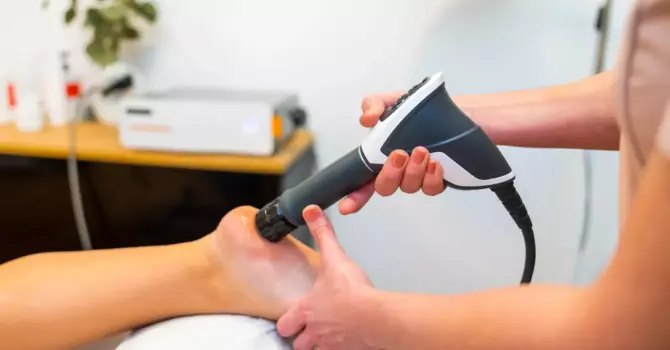
Why Your Jaw Might Be Causing Your Headaches (TMJ Dysfunction)
If you experience frequent headaches, particularly around the temples, behind the eyes, or at the base of your skull, your jaw might be the last place you would think to be the cause. However, for many individuals, TMJ dysfunction can be an overlooked factor contributing to chronic headaches, neck pain, and facial tension.
At Arthrology Chiropractic, we frequently encounter patients whose headaches significantly improve when we address their jaw mechanics. The relationship between the temporomandibular joint (TMJ) and the structures of the head, neck, and face is both anatomical and neurological. When this joint is dysfunctional, it can lead to a range of symptoms.
In this blog post, we will explain what TMJ dysfunction is, how it can lead to or exacerbate headaches, and discuss effective treatment options.
What is the TMJ?
The temporomandibular joint is the hinge that connects your lower jaw (mandible) to your skull, just in front of your ears. You use it every time you:
- Talk
- Chew
- Yawn
- Swallow
- Clench your teeth
It is a complex joint that involves both hinge and sliding movements. It is surrounded by muscles, ligaments, and a small disc that helps absorb shock and guides movement.
Due to its proximity to the ears, face, and neck, as well as its close connection to the nervous system, the TMJ can affect a wide range of systems when it becomes dysfunctional.
What is TMJ Dysfunction (TMD)?
TMJ dysfunction (often abbreviated as TMD) is a term that encompasses pain, limited jaw motion, or mechanical issues affecting the jaw and surrounding muscles.
Common symptoms of TMD include:
- Headaches or migraines
- Jaw pain or clicking
- Ear pain or pressure
- Neck stiffness
- Facial muscle tension
- Difficulty opening or closing the mouth
- Teeth grinding (bruxism)
TMD is more prevalent in women, particularly those aged 20 to 40, but it can impact anyone, especially individuals experiencing high stress or with poor posture.
How the TMJ Causes Headaches
There are several ways the TMJ can trigger or worsen headaches:
1. Muscle Referred Pain Patterns
The muscles controlling the jaw, particularly the masseter, temporalis, and pterygoids, can refer pain to the temples, cheeks, forehead, or behind the eyes. These pain referral patterns often resemble tension headaches or sinus pain.
2. Nervous System Overlap
The trigeminal nerve innervates the jaw, face, and part of the head. When the jaw is irritated or inflamed, it can sensitize this nerve, resulting in headache-like symptoms.
3. Postural Strain
TMD frequently coexists with forward head posture, upper cervical dysfunction, and muscle imbalances in the neck and shoulders, all of which contribute to cervicogenic headaches.
4. Bruxism and Clenching
Grinding or clenching your teeth, especially at night, creates sustained tension in the jaw and face muscles, leading to pain and fatigue that can radiate into the head and neck.
Common Triggers of TMJ Dysfunction
- Stress: Increased clenching and grinding of the teeth
- Poor Posture: Slumped posture with forward head translation and rounded shoulders
- Dental Issues: Misaligned bite, missing teeth, and tight dental work
- Trauma: Injuries from whiplash, falls, or facial trauma
- Hypermobile Joints: Lax ligaments that contribute to instability
- Chewing Habits: Habitual chewing on one side of the mouth
- Neck or Upper Back Dysfunction: Issues affecting the cervical and upper thoracic regions
Since the jaw does not function in isolation, treating TMJ dysfunction often requires addressing associated areas, including the neck, upper back, shoulders, and nervous system.
How TMJ-Related Headaches Are Diagnosed
At Arthrology Chiropractic, a comprehensive evaluation includes:
- Palpation of the jaw and surrounding tissues.
- Assessment of jaw movement, including any clicking, popping, or locking.
- Evaluation of posture and cervical spine mechanics.
- Review of the patient's history, including dental work, injuries, or habits such as clenching.
In some cases, imaging techniques such as panoramic X-rays or MRI may be used to examine the joint structure; however, most temporomandibular disorders (TMDs) are diagnosed clinically.
Treatment Options for TMJ-Related Headaches
1. Chiropractic Manipulation
Targeted joint manipulation can improve alignment and mobility of the:
- Temporomandibular joint
- Cervical spine
- Thoracic spine and shoulders
Restoring proper joint mechanics helps reduce mechanical stress, improve neuromuscular coordination, and relieve strain on surrounding tissues.
2. Soft Tissue Therapy
Techniques like myofascial release and IASTM release tension in the muscles most commonly involved in TMJ dysfunction, including:
- Masseter
- Temporalis
- Pterygoid
- Sternocleidomastoid (SCM)
- Subocciptals
Releasing trigger points and adhesions in these areas can significantly reduce referred pain and restore normal jaw function.
3. Dry Needling
Dry needling targets myofascial trigger points in overactive and painful muscles using fine, sterile needles.
In cases of TMD, dry needling can be especially effective when applied to the:
- Masster
- Temporalis
- Lateral Pterygoid
- Cervical paraspinal and suboccipital muscles
Dry needling can rapidly reduce pain and muscle tension, improve jaw mobility, and enhance the effectiveness of other manual therapies.
4. Postural Retraining
Poor posture, especially forward head carriage, places additional strain on the jaw and neck.
We use postural retraining to:
- Improve spinal alignment
- Re-educate muscle patterns
- Support the jaw in a more balanced, unloaded position
Breathing mechanics are often integrated to support deeper core stability and reduce compensatory tension.
5. Stress Management
Since clenching and grinding are often associated with emotional stress, managing stress is essential for addressing TMJ-related symptoms.
We may recommend:
- Mindfulness practices
- Breathing exercises
- Progressive muscle relaxation
- Lifestyle coaching to help manage chronic stress
6. At-Home Exercises
We provide individualized home exercise programs (via Physitract) to reinforce in-office care and support ongoing recovery. These may include:
- Controlled jaw movements
- Tongue and breathing coordination
- Cervical spine stabilization
- Mobility exercises for the neck, upper back, and shoulders
These exercises help retrain motor control and reduce overuse of the jaw and facial muscles.
7. Collaboration With Dentists
In cases where dental factors are involved, we may work in collaboration with your dentist to:
- Create a custom night guard
- Evaluate occlusion and bite alignment
- Address bruxism-related wear and tear
How to Know if Your Headache Might Be TMJ-Related
You may want to consider TMJ dysfunction if your headaches are:
- Focused around the temples, jaw, or ears
- Accompanied by jaw clicking, clenching, or tightness
- Worse in the morning (from grinding overnight)
- Triggered by chewing or talking
- Associated with neck pain or stiffness
Final Thoughts
Your jaw might not be the first thing that comes to mind when addressing headaches, but for many people, TMJ dysfunction could be the missing link. The jaw's connection to the neck, head, and nervous system makes it a potential key factor in persistent or unexplained headache patterns.
At Arthrology Chiropractic, we take a comprehensive approach by assessing posture, movement, muscle function, and habits to identify the underlying cause of your pain and create a plan that promotes long-term relief.
If you are experiencing chronic headaches, jaw pain, or facial tension, it may be time to have your TMJ assessed.

Edward Boudreau
Contact Me



.png)
